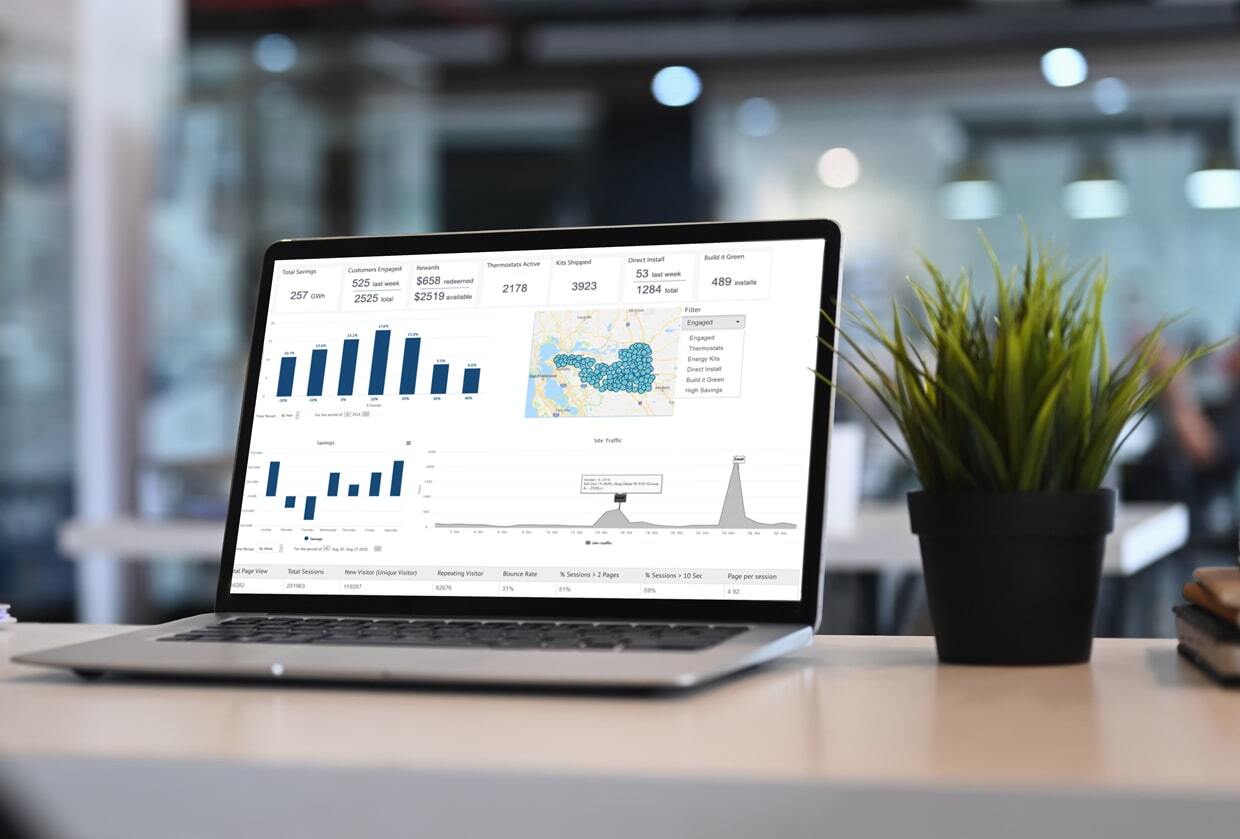
In many ways, 2023 was momentous for clean energy, from the release of guidelines for the Inflation Reduction Act to billions in funding for EV charging infrastructure throughout the US. With this increased focus, 2024 is poised to be truly transformative for the clean energy landscape. And it’s especially meaningful to Franklin Energy as we celebrate our 30th anniversary.
Our legacy is built on our work in local communities across the country, backed by a team of industry-leading experts, dedicated to the clean energy transition. Reflecting on our teams' accomplishments while also looking ahead at what’s next, here are four trends to keep an eye on in 2024.
1. Widespread Equitable Transportation Electrification Takes Creativity.
Electric vehicle sales boomed in 2023, due in no small part to exciting new models and lucrative incentives, but that’s not enough to drive a swift, widespread transition to equitable transportation electrification. New EVs are still too expensive for most low- to moderate-income families to afford, and the secondary EV market is showing potential, albeit slowly. Furthermore, public EV charging infrastructure isn’t widespread, especially in disadvantaged communities, and the costs, time, and hassle associated with installing it are out of reach for many homeowners and businesses. Add in the complication of multifamily housing where parking isn’t assigned, or urban neighborhoods where residents rely on public transit. This is where innovative offerings like electrified micromobility (e.g., e-bikes, e-scooters) and integrated transit strategies can help move the needle in a customer-focused way. Experienced partners like Franklin Energy stand ready to help utilities by offering expert guidance in building customizable transportation electrification programs from the ground up.Learn More About Our Approach to Advancing Equitable Electric Mobility!
2. Simplified Rebate Stacking & Braiding Will Maximize Impact
The landmark energy efficiency funding provided to states as part of the Inflation Reduction Act can supercharge existing utility programs. With the EISA lighting transition and the loss of cheap, easy energy-saving measures, customers will need additional support to make complicated and expensive equipment upgrades palatable. Thoughtfully designed state- and utility-based programs with eligibility criteria aligned with federal requirements allow incentives from the state and utility sources to seamlessly combine with federal tax incentives like 179D and 25C. This is a triple win for utilities, customers, and the environment. Of course, simplifying incentives, requirements, and applications from the customer’s point of view requires lots of legwork on the back end. States and utilities will need a savvy partner capable of streamlining the contractor and customer experience, to integrate with state energy office programs launching later this year. Franklin Energy is committed to getting this transition right in a customer-focused way; this is a once-in-a-lifetime opportunity to accelerate electrification and decarbonization in our industry all while reducing peak usage.
Learn More About Our Thoughts on IRA Funding
3. Choose-Your-Own-Adventure Load Management
Load management isn’t new. In fact, we’ve been doing it since our founding 30 years ago (and still have some of the same clients). What’s new is the alternate pathways to achieve it and the renewed importance due to the electrification initiatives throughout the country. Customers want choice – we know this – but oftentimes programs force them into participation paths that don’t meet their needs or preferences, and this can impact the ability of a program to perform as intended. For example, installing load management switches on an AC unit isn’t exactly revolutionary, but it does result in large-scale guaranteed load reduction. For those customers open to it, this is an excellent option. Smart thermostats and batteries are more exciting technologies, and with customer flexibility comes implementation complexity. Some customers will want to purchase devices, enroll in programs, and schedule installation via their utility’s marketplace in one seamless process, whereas others will want to purchase the equipment on their own and enroll after the fact. Both scenarios should be offered and easy for the customer. And finally, managed charging opens another new avenue of control, whether it’s passively via EV rates and voluntary programs or actively via electric vehicle supply equipment (EVSE) control or telematics control of the EV itself. Franklin Energy recently launched a large-scale research study to understand what customers want in terms of participation paths and incentives for managed charging. The upshot? It’s complicated. We’ll be sharing the results of this research at the Association of Energy Services Professionals (AESP) Annual Conference in San Antonio in February—we hope you’ll join us in that session.
4.Electrification Readiness is Key
Home electrification is a hot topic for many utilities and will be a key component of Inflation Reduction Act programs offered by state agencies. The challenge is that many homes aren’t ready for the onslaught of electrified appliances, HVAC equipment and EVSE—their panels can’t support the additional load. In many utility programs, panel upgrades don’t meet cost effectiveness requirements, yet they need to be incentivized to encourage adoption of heat pumps, heat pump water heaters, induction cooktops and ranges, and EVSE. Federal Home Electrification and Appliance Rebates (HEAR) funds will be available but are limited. Some ratepayer programs in states like MN, CO, NJ, and NY have been able to overcome the sticky issues around fuel switching, and this will be critical in other states as well to ensure home infrastructure can support the electrification revolution. Franklin Energy has developed tools to support electrification readiness assessments in the field, brought innovative solutions to the complexities of fuel switching, and supported clients in making this transition in CA and WA, and are launching more today.
Learn More About our Success in Electrification!
Looking back, 2023 marked significant progress in clean energy, setting the stage for a transformative 2024. Looking ahead, these four major trends will impact the pace of sustainable energy solution adoption. Franklin Energy is poised to innovate, collaborate, and integrate with our partners, delivering real-world, cost-effective solutions for our communities. To great opportunities ahead!

.png)
.png)


.png)
